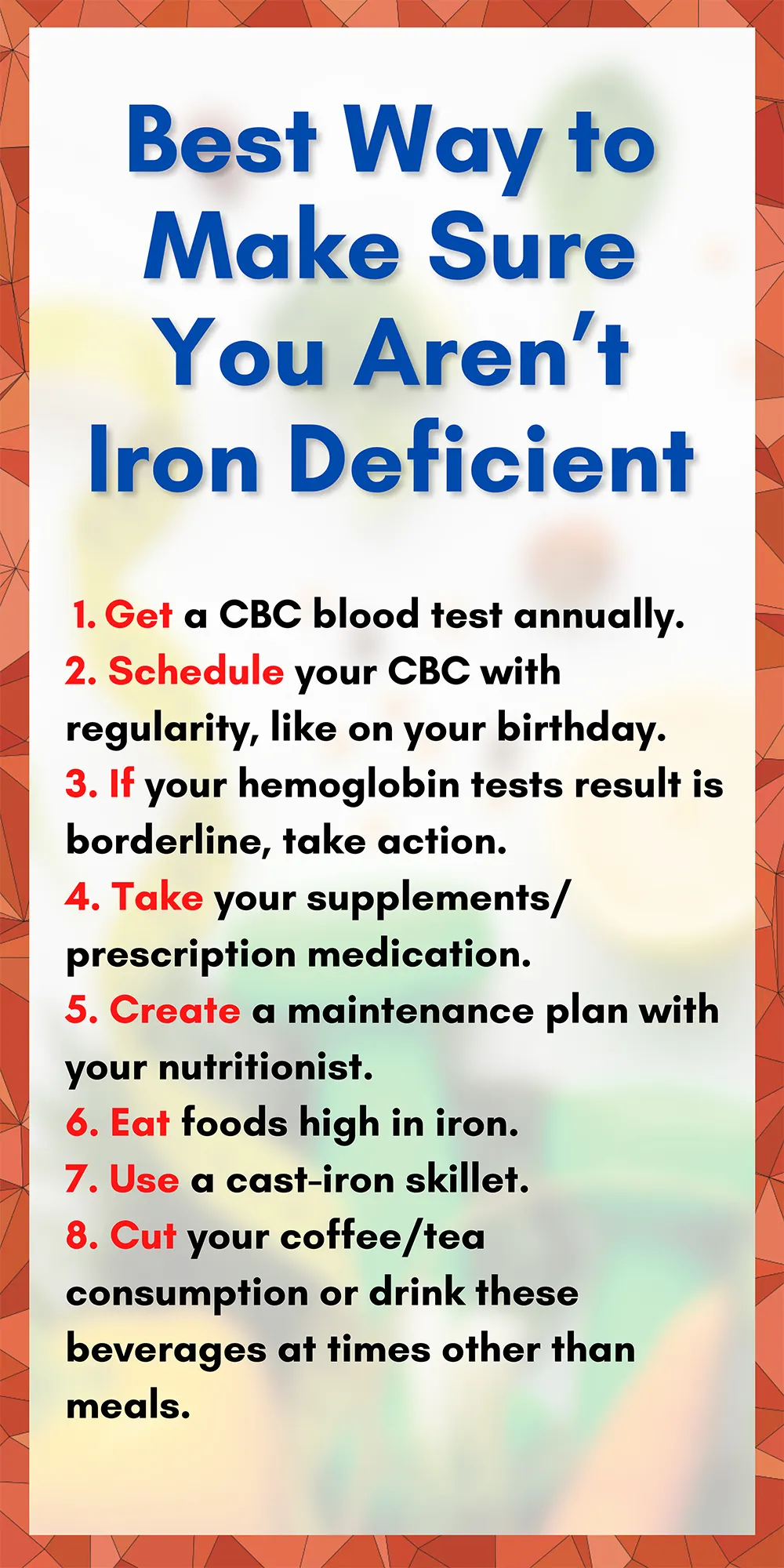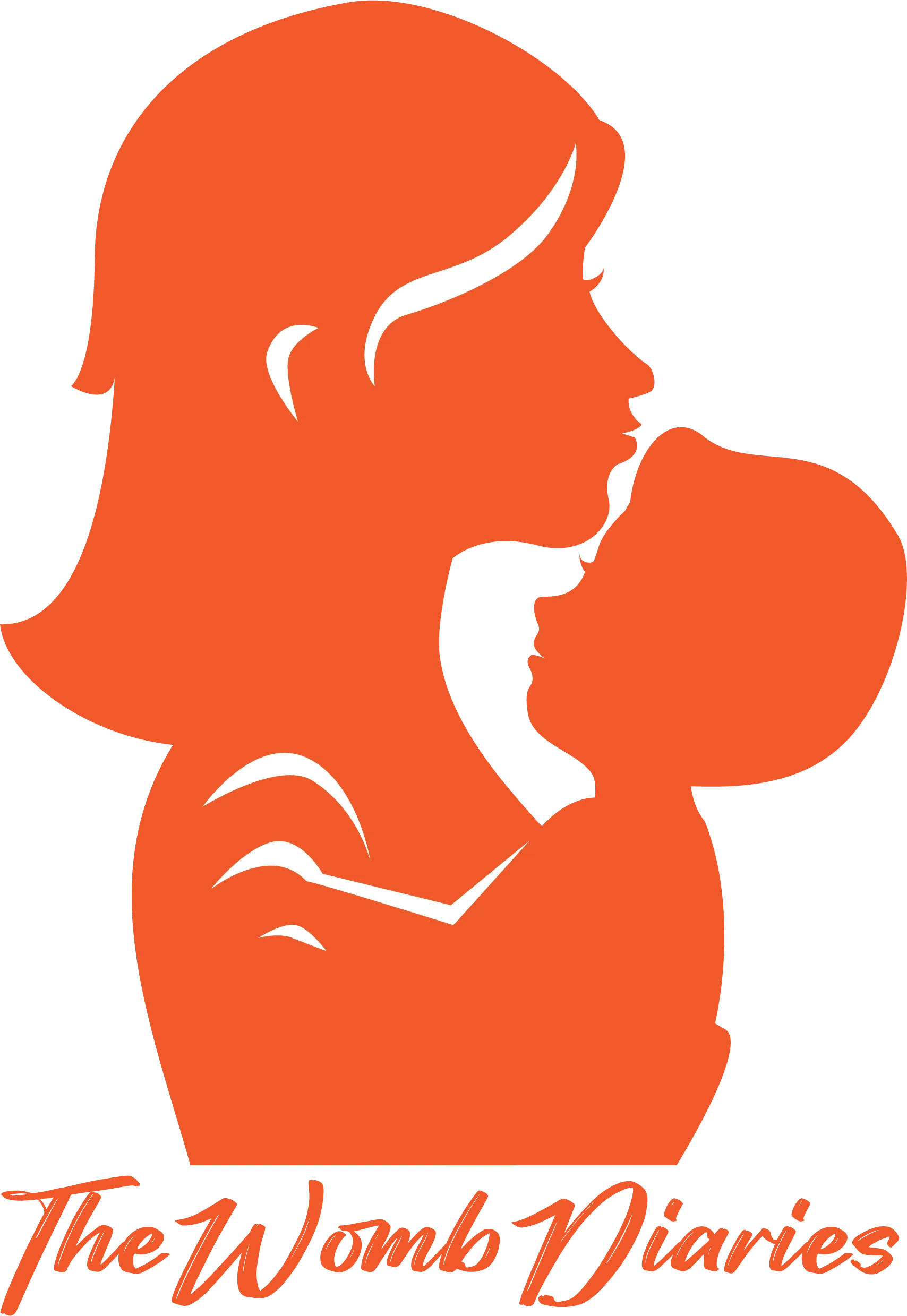What’s the Best Way to Make Sure I’m Not Deficient in Iron?

Stay aware of your iron levels. You’re a woman and need to do this for your overall health and reproductive health.
1. Get a CBC Blood Test Annually
Get a CBC blood test annually that tells you your hemoglobin levels. If your doctor won’t order this, then you can order it online at Life Extension Foundation, www.lef.org. The cost is minimal, less than drinks at a coffee bar/juice bar for a week.
2. Schedule Your CBC Blood Test with Regularity
Schedule your CBC blood test annually around your birthday, telling yourself you are doing something nice for your body by checking in on your iron levels.
3. Note Borderline Test Results
Don’t wait until you have a full-blown deficiency. If your hemoglobin levels are borderline or low, take action. You may need tests for iron as well. Work with your doctor (or doctor at Life Extension Foundation) and schedule further consultations. Don’t determine what you are going to do unless you are a doctor or qualified nutritionist.
4. Take Your Supplements
Once you get your prescription, start diligently taking your supplements. In three months you will need a follow-up to make sure your levels are where they should be.
5. Create a Maintenance Plan
Once you have reached normal iron levels, it’s an achievement. Celebrate that but don’t think your battle is over. As long as you have menstrual periods, you have a higher need for iron. Consult with a nutritionist who can create a plan that works best for you, accounting for high iron foods that you normally eat/don’t eat and supplements.
Tip-o-graphic
What Do Anemia Tests Mean?
CBC or Complete Blood Count
This test includes a result for hemoglobin levels. Of your normal iron stores, about 65% of it is found in hemoglobin. When hemoglobin is low, there is some type of anemia. That’s when it’s the doctor’s job to determine what type of anemia is present.
Serum Iron
This measures all the iron circulating in your blood.
Ferritin
This test tells the doctor the level of the iron stores. If ≥ 15 ug/L, the body is storing iron. If the level is < 12 ug/L for someone <5years of age and <15 ug/L for >5 years of age, the stores are depleted.
Transferrin
This is the protein that transports iron from your intestines to the cells in your body.
Total Iron Binding Capacity
This is an indirect measure of the amount of transferrin you have. One-third of the transferrin you have should be used to transport iron.
Do you recall the high iron foods?
They are:
Raisin bran cereal (fortified) 1 cup 5.8-18.0mg
Beef liver, pan-fried 3 oz 15.2 mg
Oysters, Pacific, cooked 6 med 13.8 mg
Chicken liver, pan-fried 3 oz 10.8 mg
Tofu, regular, raw ½ cup 6.6 mg
Spinach, cooked 1 cup 6.4 mg
Mussels, cooked, steamed 3 oz 5.7 mg
